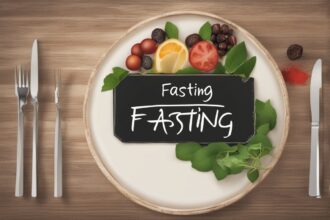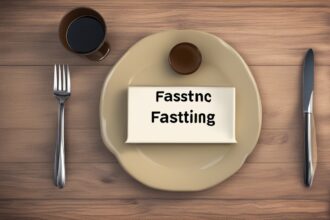Hey there, curious reader! If you’ve ever wondered what fasting is all about, you’re in the right place. Whether you’re looking to improve your health, shed a few pounds, or simply understand this ancient practice, I’m here to break it down for you. Fasting, at its core, is voluntarily abstaining from food and sometimes drink for a specific period. But there’s so much more to it than just skipping meals. In this comprehensive guide on fasting explained, we’ll dive into its history, the science behind it, different types of fasting, and practical tips to get started. Let’s unpack this fascinating topic together and see why millions of people worldwide are embracing fasting as a lifestyle choice.
The History and Origins of Fasting
Fasting isn’t some newfangled diet trend—it’s been around for centuries, deeply rooted in human history and culture. From ancient religious practices to traditional healing methods, fasting has played a significant role across civilizations. In many spiritual traditions, like Ramadan in Islam, Lent in Christianity, and Yom Kippur in Judaism, fasting is a way to purify the body and soul. Beyond spirituality, historical figures like Hippocrates, often called the “father of medicine,” advocated for fasting as a way to heal the body. Even in hunter-gatherer societies, fasting occurred naturally when food was scarce. Today, as we explore fasting explained, it’s clear that this practice has evolved from necessity and ritual into a science-backed health strategy.
What is Fasting? A Simple Definition
So, let’s get to the basics of fasting explained. Fasting is the deliberate act of not eating for a set period. While that sounds straightforward, the reasons and methods behind fasting can vary widely. Some people fast for weight loss, others for mental clarity, and many for health benefits like improved metabolism or reduced inflammation. During a fast, your body shifts from using glucose (from food) as its primary energy source to burning stored fat, a process called ketosis. This metabolic switch is one of the reasons fasting has gained attention in the health and wellness community. But fasting isn’t just about not eating—it’s about giving your digestive system a break and allowing your body to focus on repair and recovery (Horne et al., 2015).
The Science Behind Fasting: How It Affects Your Body
Now, let’s nerd out a bit and talk about the science of fasting. When you fast, incredible things happen inside your body at a cellular level. After about 12–16 hours without food, your insulin levels drop, and your body starts tapping into fat stores for energy. This process not only helps with weight management but also triggers autophagy, a cellular “clean-up” mechanism where damaged cells are recycled and replaced with healthier ones (Mattson et al., 2017). Studies also suggest that fasting can improve insulin sensitivity, lower blood pressure, and reduce markers of inflammation—key factors in preventing chronic diseases like diabetes and heart disease (Longo & Mattson, 2014). While the research is promising, fasting isn’t a magic bullet, and results can vary based on individual health conditions. Still, the science behind fasting benefits is compelling enough to make anyone curious.
Different Types of Fasting: Finding What Works for You
Not all fasting is created equal, and that’s a good thing! There are several approaches to fasting, each with its own structure and benefits. Whether you’re a beginner or a seasoned faster, understanding these methods is key to finding what suits your lifestyle. Here’s a rundown of some popular types of fasting to help with fasting explained in practical terms:
- Intermittent Fasting (IF): This involves cycling between periods of eating and fasting. Common methods include the 16/8 approach (fast for 16 hours, eat during an 8-hour window) or the 5:2 method (eat normally for 5 days, restrict calories to 500–600 on 2 days).
- Water Fasting: A more intense approach where you consume only water for a set period, typically 24–72 hours. It’s often used for detoxification but should be done under medical supervision.
- Extended Fasting: This lasts several days or even weeks and is usually done for therapeutic reasons. It’s not for beginners and requires careful preparation.
- Religious Fasting: Practices like Ramadan involve abstaining from food and drink from dawn to dusk for a month, combining spiritual and physical discipline.
Each type of fasting has unique effects on the body, so it’s worth experimenting (safely!) to see what aligns with your goals. Always consult a healthcare provider if you have underlying health issues before diving into more intense fasting regimens.
Benefits and Potential Risks of Fasting
Fasting comes with a host of potential benefits, but it’s not without its challenges. Let’s break down both sides so you have a balanced view of fasting explained in terms of pros and cons. On the positive side, fasting has been linked to weight loss, improved brain function, and better metabolic health. It may even promote longevity by reducing oxidative stress and inflammation in the body (Fontana & Klein, 2007). But it’s not all sunshine and rainbows—fasting can also lead to side effects like hunger pangs, irritability, and fatigue, especially if you’re new to it. For some, particularly those with medical conditions like diabetes or eating disorders, fasting can be risky and should only be done under professional guidance. Here are a few key benefits and risks to consider:
- Benefits: Supports weight loss by reducing calorie intake and boosting fat-burning.
- Benefits: May enhance mental clarity and focus due to increased ketone production.
- Risks: Can cause low energy or dizziness, especially during longer fasts.
- Risks: Not suitable for pregnant women, children, or those with certain health conditions.
The takeaway? Fasting can be a powerful tool, but it’s not a one-size-fits-all solution. Listen to your body and prioritize safety above all.
Practical Tips for Starting Your Fasting Journey
Ready to give fasting a try? I’m excited for you! But before you jump in, let’s talk strategy. Starting with fasting doesn’t have to be intimidating if you take it slow and plan ahead. The key to success with fasting for beginners is preparation and patience. Don’t expect to master a 24-hour fast on day one—instead, ease into it with shorter fasting windows and build up over time. Stay hydrated by drinking plenty of water, and consider electrolytes if you’re doing longer fasts to prevent imbalances. Also, break your fast gently with light, nutrient-dense foods like broth or veggies rather than a heavy meal. Focus on how fasting fits into your life, not the other way around. If you’re feeling overwhelmed, remember that even small fasting windows can yield benefits. With fasting explained in actionable steps, you’re well on your way to making it a sustainable habit.
In wrapping up this deep dive into fasting explained, I hope you feel empowered to explore this practice with confidence. Fasting isn’t just about skipping meals—it’s a intentional way to reset your body, mind, and even spirit. From its historical roots to the modern science backing its benefits, fasting offers a unique path to wellness when done thoughtfully. Whether you’re drawn to intermittent fasting for weight management or intrigued by the cellular renewal of longer fasts, there’s something for everyone. Remember to start small, stay hydrated, and consult a professional if you’re unsure. I’d love to hear about your fasting experiences or questions in the comments below—let’s keep this conversation going!
References
- Fontana, L., & Klein, S. (2007). Aging, adiposity, and calorie restriction. JAMA, 297(9), 986-994.
- Horne, B. D., Muhlestein, J. B., & Anderson, J. L. (2015). Health effects of intermittent fasting: Hormesis or harm? A systematic review. The American Journal of Clinical Nutrition, 102(2), 464-470.
- Longo, V. D., & Mattson, M. P. (2014). Fasting: Molecular mechanisms and clinical applications. Cell Metabolism, 19(2), 181-192.
- Mattson, M. P., Longo, V. D., & Harvie, M. (2017). Impact of intermittent fasting on health and disease processes. Ageing Research Reviews, 39, 46-58.






